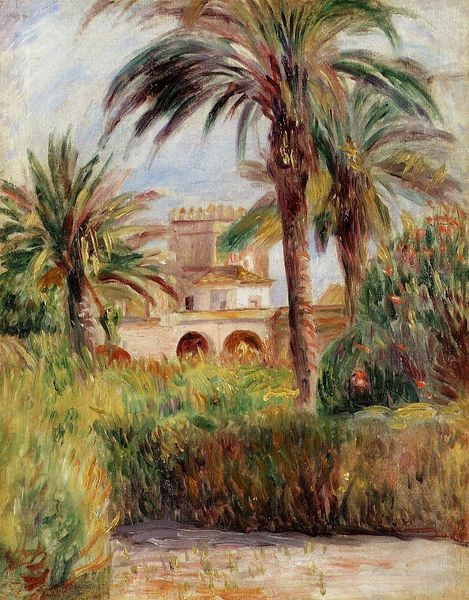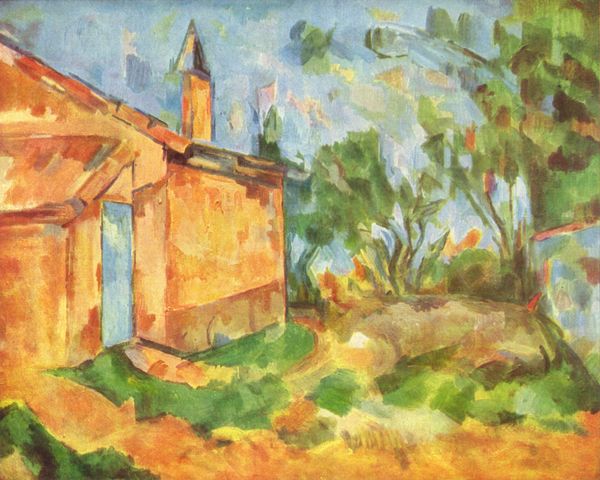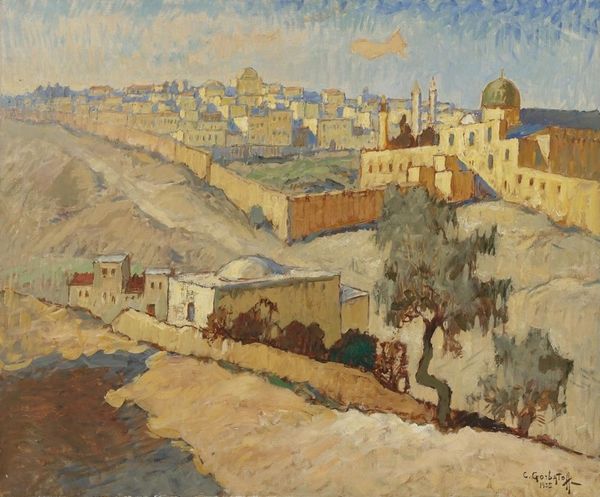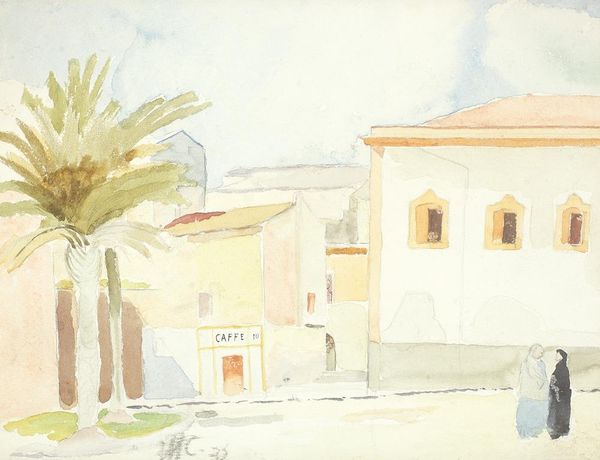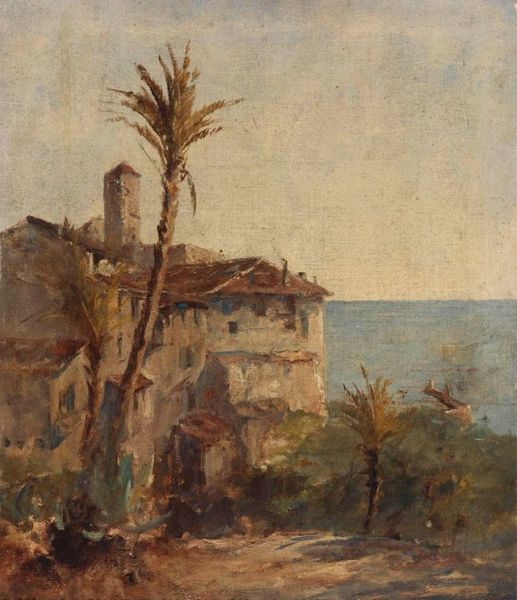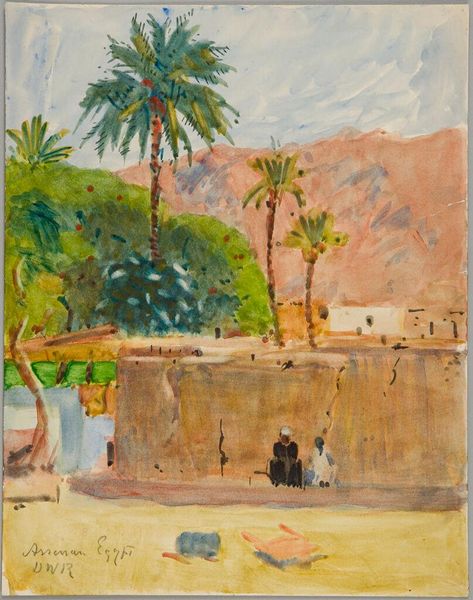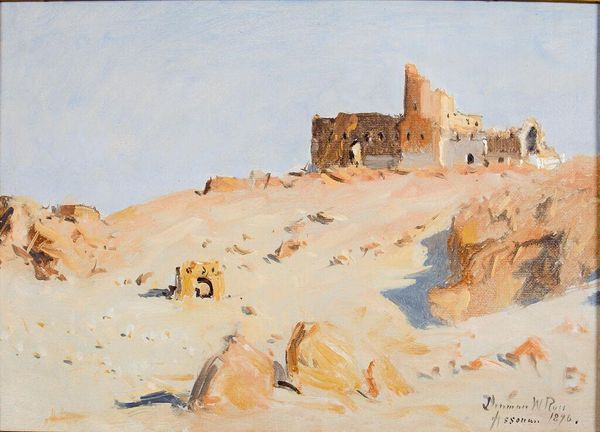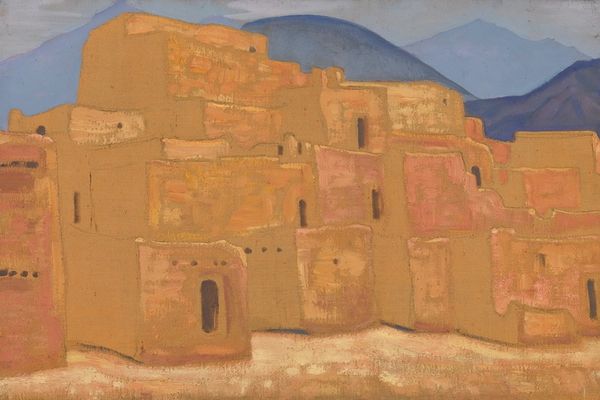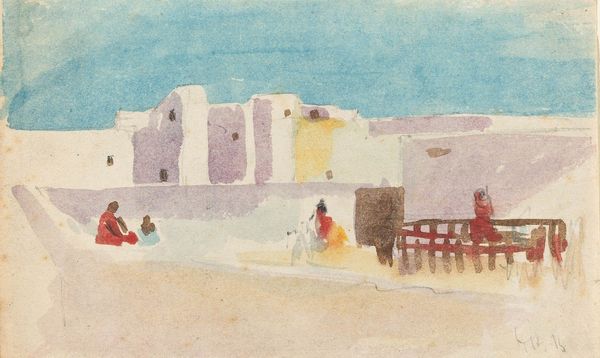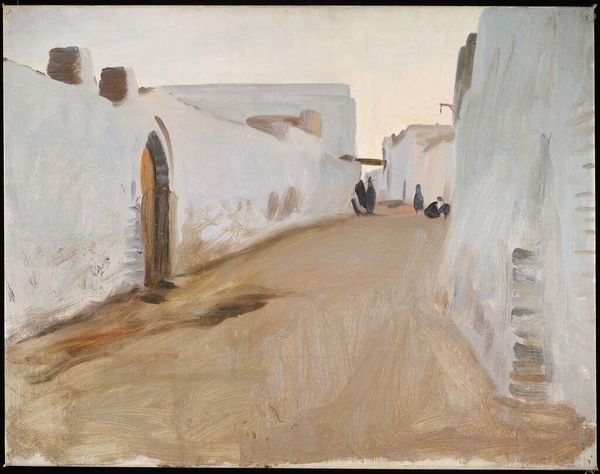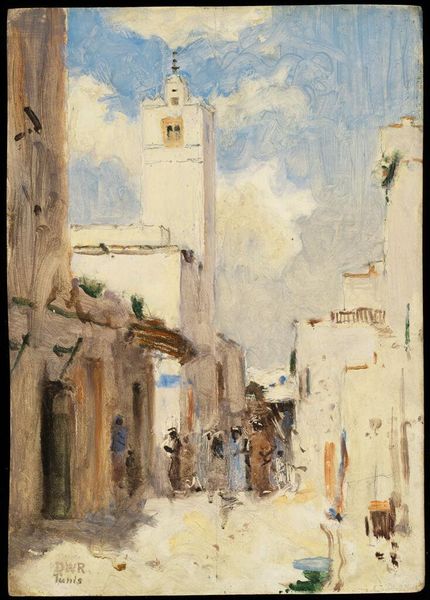
Copyright: Public domain
Editor: So, this is Kuzma Petrov-Vodkin’s “Negro Village” from 1907, oil and watercolor. It's striking how still and muted it feels; what's your take on this work? Curator: This painting brings up interesting questions of representation and the gaze. Given the title and the period, it is essential to analyze how "Negro Village" fits into the broader context of Orientalism and colonialism. Who is Petrov-Vodkin, a Russian artist, to be painting this "village?" Editor: That's a good question! It's labelled as impressionism and orientalism… The orientalism label makes me feel uncomfortable, given what you said, that someone from outside the culture is presenting a romanticized view. Curator: Exactly. The label “Negro Village” flattens the complexities of the location. We need to critically examine how this image participates in constructing the “Other.” What visual cues suggest a power dynamic at play? The architecture, the seemingly empty landscape—are these elements used to highlight difference? Editor: It's true. The way it's composed is distant and almost detached, presenting the village more like a landscape than a community with individual lives. So what seems initially like a serene landscape prompts bigger ethical and historical questions? Curator: Precisely! It’s an entry point to discuss how art can perpetuate problematic stereotypes and reinforce power imbalances. Thinking critically about representation allows us to recognize whose voices are amplified and whose are marginalized. Editor: Wow. I hadn't thought about it like that. I learned how crucial it is to look at art and its background with a very critical and questioning perspective. Curator: And how important it is to acknowledge and challenge these representations! There’s always much more beneath the surface.
Comments
No comments
Be the first to comment and join the conversation on the ultimate creative platform.



